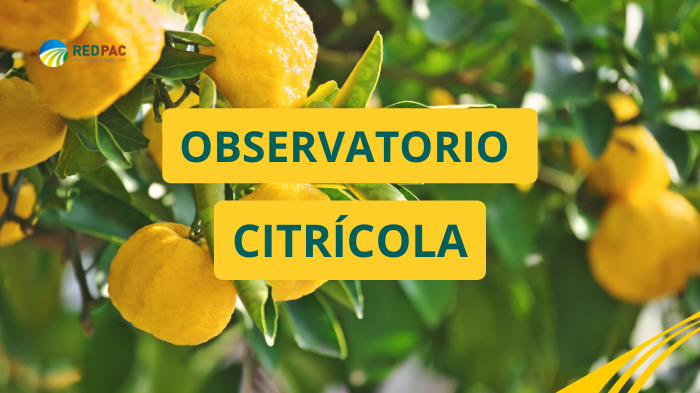
27 de November de 2024
Dinamización rural
Innovación
The "Sustainable Citrus Growing" Operational Group creates the "Citrus Observatory in the Guadalquivir Valley" with the aim of boosting citrus cultivation by providing relevant data to farmers, technicians and companies.
- The "Sustainable Citrus Growing" Operational Group has created the "Citrus Observatory in the Guadalquivir Valley" with the aim of boosting citrus cultivation by providing relevant data to farmers, technicians, and businesses.
- The project is the result of a collaboration between Palma del Río City Council, the Palmaecológica Association, the Palmanaranja Citrus Professional Association, and the Middle Guadalquivir Rural Development Group.
On January 1, 2023, the Sustainable Citrus Growing Project (GO) in the Guadalquivir Valley began collecting data from rural areas within the citrus sector through the creation of the Citrus Observatory. The project combines a series of analytical tools that seek to provide the largest possible amount of information to the Middle Guadalquivir Valley through digitalization , the use of cutting-edge technologies, Big Data , and the collection of public, private, and agronomic data.
On November 20, the Citrus Observatory was launched in Palma del Río, Córdoba. The various panels comprising the Observatory were detailed, divided into four themes: agronomy, economics, surface area/variety, and geographic information systems.
Operation of the Observatory
The Observatory's interactive dashboards, which allow farmers to access digital data in a visual and dynamic way, are divided into four:
- Irrigation: Personalized recommendations based on data.
- Health: monitoring of pests such as red scale and fruit fly, with prediction of optimal times to apply phytosanitary treatments.
- Growth: remote monitoring of fruit development.
- Geographic information: data on citrus fruit areas by variety and municipality, with trends over recent years.
The data collected by the Observatory also includes: a study on citrus fruit prices in wholesale markets and auction houses; a comparison of historical and current prices; data on citrus fruit exports and imports in Spain; and statistics on citrus fruit consumption in Spanish households.
Project phases
The Citrus Observatory, which will conclude its work on December 31, 2024, consists of four phases of action:
• Documentary Phase : collection and processing of data on citrus fruits, using experimental plots in various locations (Peñaflor, La Graja and El Mohino).
• Experimental Phase : installation of agroclimatic stations and devices for real-time monitoring of soil conditions, climate and pests.
• Report Writing Phase: preparation of technical reports on the collected data and agronomic analysis.
• Dissemination Phase : development of interactive and dynamic panels with information on various aspects mentioned above.
The project seeks to improve the sustainability and efficiency of citrus cultivation in the region by using advanced technologies such as humidity, temperature, and solar radiation sensors, among others, for continuous monitoring. All of this facilitates informed decision-making and resource optimization.
For more information, to see the conclusions that will be released in December, and to access videos of the event, please visit the Guadalquivir Valley website .
Members and funding
The “Sustainable Citrus Growing” Operational Group is made up of the Palma del Río City Council , the Palmanaranja Citrus Professional Association, the Association for the Defense and Promotion of Palmaecological Production and the Rural Development Group of the Middle Guadalquivir in collaboration with IFAPA .
The project is funded by the European Agricultural Fund for Rural Development (EAFRD) through the Andalusian Regional Government.









